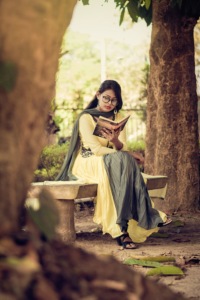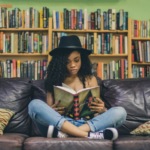Blogpieces for Beloved, Jazz and Paradise
Entering into the emotional dramas and ancestral landscapes of Toni Morrison's novels can be daunting but also exhilarating, and sometimes sobering. Vivid passages can lead us to discover new ways of being in the world as sheer, concrete descriptions rock us
Although she has claim, she is not claimed.In the place where long grass opens, the girl who waited to be loved and cry shame erupts into her separate parts, to make it easy for the chewing laughter to swallow her all away.
This is Morrison's descriptive metaphor for how the character called Beloved disappeared from the house on 124 Bluestone Road.
What do you feel about this young woman after reading this?

You see, I want to know what you think. I want us to be able to share our responses to not only specific image-scenes, as in the above example, but to the emotional arcs of all of the characters; to the landscapes and ancestral territories, to the esthetic experiences of readers encountering dramatic arrangements of the parts of the story, the juxtapositions and oppositions.

Joy Deb /Pexels
That's why I've created what I call "blog-pieces": "blog" to retain the character of a short writing--with images, video links, musical links, and the like--and "pieces" to evoke what are essentially informal, reflective non-fiction pages that speak directly to the reader.
Blogpieces are Organized into 3 Sections:
FOUNDATIONS: Root Blogs, Reader's Participation & Emotional Story Structures
THE HEART OF THE MATTER: Time & Memory, Claiming Geographic Space, Music & Intermediality
LARGER CONTEXTS: More on Aesthetics, Morrison's Intertextuality, & Race and Response-ability
9 BLOGPIECE "CLUSTERS": One way of going through these is to from the upper left to the lower right. But you can browse as you wish! Happy Reading and Responding!
ALTERNATIVE: A Chronological unfolding of the blogs--to see each blog in sequence
“But when necessity’s yoke was put upon him/ he changed, and from the heart the breath came bitter/ and sacrilegious, utterly infidel,/to warp a will now to be stopped at nothing.” –Aeschylus, The Agamemnon Morrison’s art of the novel is rich with intertextual references to other works of literature. There are several excellent studies you may know…
Read MoreJazz’ narrator is wily and temperamental, which is why she may be “talking back” to another narrator in another novel: Molly Bloom at the end of James Joyce’s Ulysses. The nameless narrator of Jazz exemplifies a type of intertextuality that Morrison has developed between characters in different novels. Toni Morrison’s Beloved Trilogy considers whether or not…
Read More“When movements have been unable to clear the clouds, it has been the poets—no matter the medium—who have succeeded in imagining the color of the sky.” –Robyn Kelly, Freedom Dreams: The Black Radical Imagination All of Morrison’s works reflect values that have been forged through generations of African Americans since slavery began; values not only…
Read MoreFor four centuries, virulent and destructive racism against African Americans has deeply inflected the moral, ethical, and cultural networks of all Americans. Black men, women, and children have developed many forms of resistance to that racism, from political communities and activisms to artistic resistances that comprise freedom. It is through their courage and love for the…
Read MoreJust as the sea’s rhythmic waves refresh two exhausted figures lying together on a seashore in the epilogue to Paradise, they wash over us as well, as we’re finishing not only an unresolved-but-hopeful novel, but an unresolved-but-hopeful trilogy. My chosen language, “unresolved-but-hopeful” was not chosen to be glib; nor am I lazy in grabbing at…
Read MoreWe read and reflect on Morrison’s characters’ senses of time and memory, as we explore in Rhythms of Memory in Beloved, Jazz, & Paradise and Making Time. But how will readers experience the time of reading the narratives? This blog will address this question: How do narrative elements such as flash-backs draw readers into experiencing…
Read More“Black people . . . have been simultaneously deprived of time and fixed in it by the color of their skin” —James Baldwin In Black Time: Fiction of Africa, the Caribbean, and the United States (1981), Bonnie Barthold states that in much African American literature, there is a practice of “making time” in the face…
Read MoreMemory is a highly-charged emotional experience for Morrison’s characters in the Beloved project, and it becomes a vast theme for readers to grapple with as well. Questions of how much love is too much or not enough in Morrison’s trilogy project frequently intersect with another set of exigencies: how must the demands of remembering and…
Read MoreAccording to lore, jazz was an amalgamation. In 1894, New Orleans Creoles lost their separate status from African Americans, so Jelly Roll Morton and Sidney Bechet started mixing it up with Buddy Bolden, Joe “King” Oliver, and Louis Armstrong. The birth of jazz was a dialogue. The hallmarks of jazz—however one defines its origins—“are improvisation,…
Read MoreWalking figures form a prominent motifs in Morrison’s trilogy. There are many figures who are on treks, from the first few pages of Beloved (Sethe through the field of chamomile; Paul D across the country) through the story-endings of Paradise (Pallas’ ghostly figure float-walking through the walls of her mother’s house; Deacon Morgan’s barefoot walk…
Read More- « Previous
- 1
- 2
- 3
- 4
- Next »


















